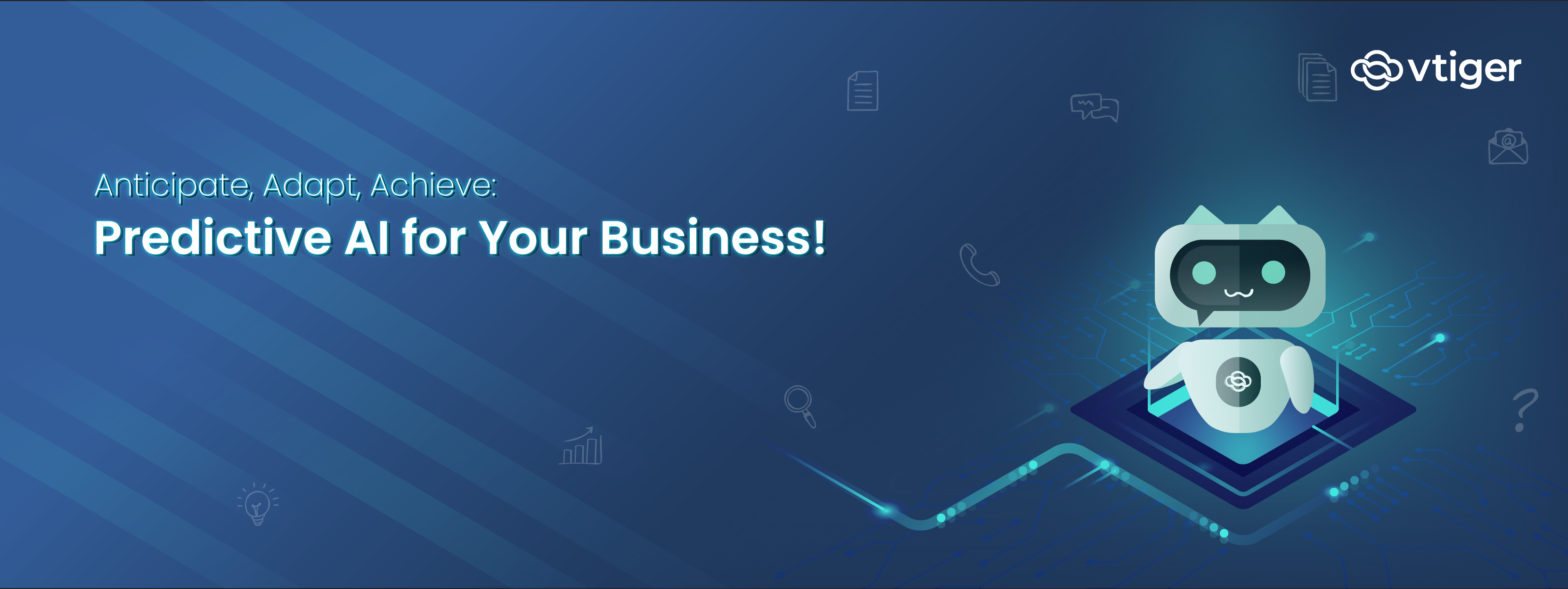Predictive AI is a branch of artificial intelligence that utilizes statistical analysis and machine learning to analyze current and historical data to identify patterns and forecast future events. The primary objective of predictive AI is to provide insights that help organizations anticipate trends, risks, and opportunities, thereby enabling more informed decision-making. By leveraging vast amounts of data, predictive AI can uncover correlations that may not be immediately apparent to human analysts, thus enhancing the accuracy of predictions. Unlike descriptive analytics, which focuses on what has happened in the past, or prescriptive analytics, which suggests actions to take, predictive AI is solely concerned with predicting future outcomes based on data insights. This capability is increasingly important in various sectors, including finance, healthcare, marketing, and supply chain management, as businesses strive to remain competitive in a data-driven world.
Understanding Predictive AI with a real-world example
To illustrate the power of predictive AI, consider its application in the retail industry. A major retail chain uses predictive AI algorithms to analyze customer purchasing patterns and inventory levels. By examining historical sales data alongside external factors such as seasonal trends and economic indicators, the system can forecast which products will likely be in high demand during upcoming sales events. For instance, if the data indicates that certain types of clothing sell well during winter holidays, the retailer can adjust its inventory accordingly to ensure sufficient stock. This proactive approach maximizes sales opportunities and minimizes excess inventory costs. As a result, predictive AI enables retailers to optimize their supply chains and enhance customer satisfaction by ensuring that popular items are readily available when consumers want them.
How Does Predictive AI Work?
Predictive AI operates through a series of systematic steps that allow it to analyze data and generate forecasts.
Key Capabilities of Predictive AI
- Data Analysis: Predictive AI begins by taking large volumes of historical data relevant to the problem at hand. This data is collected from various sources within an organization.
- Statistical Modeling: It uses various statistical and machine learning techniques to train predictive models on prepared datasets.
- Model Evaluation: The trained models are rigorously tested using separate datasets to evaluate their accuracy and precision.
Data Collection
Data collection is the first step in the predictive AI process. It involves gathering relevant historical data from various sources such as databases, sensors, social media, and transactional records. The quality and quantity of this data are crucial for building effective predictive models. Organizations often use automated tools to streamline this process and ensure they capture comprehensive datasets that reflect real-world scenarios.
Data Cleaning and Preparation
Once collected, the data must undergo cleaning and preparation. This step involves removing inaccuracies, handling missing values, and standardizing formats to ensure consistency across datasets. Data cleaning is essential because any errors or inconsistencies can lead to misleading predictions. During preparation, data may also be transformed or normalized to fit the requirements of the algorithms that will be used for analysis.
Algorithm Selection
Choosing the right algorithm is critical for effective predictive modeling. Different algorithms have varying strengths depending on the nature of the data and the specific prediction task at hand. Commonly used algorithms include regression analysis for continuous outcomes, decision trees for classification tasks, and neural networks for complex pattern recognition. The selection process often involves testing multiple algorithms to determine which yields the most accurate results for a given dataset.
Model Training
In this phase, selected algorithms are applied to historical data to create predictive models. The training process involves feeding the model with input features (independent variables) along with corresponding outputs (dependent variables). The model learns from this input-output relationship through iterative adjustments until it can accurately predict outcomes based on new input data. This phase may require significant computational resources depending on the complexity of the model and size of the dataset.
Prediction Generation
After training, the model can generate predictions by applying learned patterns to new data inputs. This process involves running real-time or recent data through the model to produce forecasts about future events or behaviors. The accuracy of these predictions depends on how well the model has been trained and how closely new data resembles historical patterns.
Techniques of Predictive AI
Predictive AI employs various techniques that enhance its capability to forecast future outcomes based on historical data analysis. These techniques leverage machine learning algorithms and statistical methods tailored for specific prediction tasks.
Decision Trees
Decision trees are a popular technique in predictive modeling due to their simplicity and interpretability. They work by splitting datasets into branches based on feature values until they reach a decision point (leaf node). Each path from root to leaf represents a classification rule or prediction outcome. Decision trees are particularly useful for classification tasks where clear decision boundaries exist but can also be prone to overfitting if not properly managed.
Random Forests
Random forests improve upon decision trees by creating a group of multiple trees trained on different subsets of the dataset. Each tree contributes a vote towards the final prediction, which enhances accuracy and reduces overfitting compared to individual decision trees. This technique is widely used in various applications due to its robustness against noise in data.
Neural Networks
Neural networks mimic human brain functioning through interconnected nodes (neurons) organized into layers (input, hidden, output). They excel at capturing complex patterns within large datasets through deep learning techniques. While highly effective for tasks such as image recognition or natural language processing, neural networks require substantial amounts of training data and computational power.
Clustering
Clustering techniques group similar data points together without predefined labels. This unsupervised learning method helps identify inherent structures within datasets by organizing them into clusters based on similarity metrics. Clustering is valuable for market segmentation or customer profiling where understanding distinct groups enhances targeted strategies.
Anomaly Detection
Anomaly detection focuses on identifying rare items or events within a dataset that deviate significantly from expected behavior patterns. It plays a crucial role in fraud detection or monitoring system health by flagging unusual occurrences that warrant further investigation. Techniques such as statistical tests or machine learning models can be employed for effective anomaly detection.
Regression Analysis
Regression analysis quantifies relationships between variables by modeling how changes in one variable affect another. It is commonly used for predicting continuous outcomes based on independent variables (predictors). Simple linear regression involves one predictor variable, while multiple regression incorporates several predictors simultaneously for more nuanced insights.
Forecasting Models
Forecasting models utilize historical time-series data to predict future trends over specified intervals (e.g., days, months). Techniques like ARIMA (AutoRegressive Integrated Moving Average) are commonly applied in finance or supply chain management, where understanding future demand patterns is critical for planning purposes.
Benefits of Predictive AI
The implementation of predictive AI offers numerous advantages across industries by enhancing decision-making processes and operational efficiency. Predictive models provide several important benefits that help organizations improve their performance and decision-making. First, they increase accuracy, offering better forecasts than traditional methods. This allows companies to make proactive decisions and anticipate challenges before they happen. Additionally, by optimizing resource use, predictive models help reduce costs and minimize waste. They also enhance the customer experience by enabling personalized services, which leads to higher customer satisfaction. Moreover, these models improve risk management by helping organizations identify potential risks early on, allowing them to address issues proactively. The efficiency of operations increases as processes are streamlined based on accurate forecasts. Finally, organizations that use predictive insights gain a competitive edge over those that rely only on past performance, as data-driven strategies build confidence among stakeholders and support better decision-making.
Use Cases of Predictive AI
Predictive AI finds applications across diverse sectors where forecasting future events can drive strategic initiatives. Predictive models are used in various fields to improve outcomes and efficiency. In healthcare, they help predict patient outcomes, which leads to better treatment plans. In finance, fraud detection systems can spot suspicious transactions before they become bigger issues. Retailers use these models for inventory management, ensuring they have the right stock levels based on expected demand changes. In manufacturing, predictive maintenance helps schedule repairs and reduce downtime. Additionally, businesses can identify customers at risk of leaving, allowing them to create effective retention strategies. In supply chain management, forecasting demand helps ensure timely restocking while avoiding excess inventory. Marketing teams analyze customer behavior to predict how people will respond to campaigns, improving targeting efforts. Lastly, utility companies forecast energy usage patterns to manage resources more efficiently during peak times.
Generative AI vs Predictive AI
Generative AI and predictive AI serve distinct purposes within artificial intelligence frameworks but can complement each other effectively. While generative AI focuses on creating new content—such as text or images—based on learned patterns from existing data sets, predictive AI analyzes historical information to forecast future outcomes or classify events based on established trends. For instance, generative AI might assist in designing product features, while predictive AI forecasts consumer demand for those features based on past purchasing behavior. Both approaches harness machine learning but target different aspects of decision-making processes within organizations.
Future Trends in Predictive AI
As technology advances rapidly, several trends are emerging within the field of predictive AI that promise enhanced capabilities and applications.
The future of predictive analytics is set to evolve in several exciting ways. One key trend is the integration with Internet of Things (IoT) devices, which will allow for real-time data collection from various sensors. There will also be a growing focus on Explainable AI (XAI), as people want models that clearly explain how they make predictions. Automated Machine Learning (AutoML) will simplify the model development process, making advanced analytics tools accessible to more industries. Additionally, organizations will increasingly use real-time analytics to make quick decisions based on immediate insights. As the use of predictive models grows, addressing ethical considerations, such as biases in data, will become very important. We can also expect predictive analytics to expand into areas like agriculture and climate science. Finally, there will be greater collaboration between generative and predictive models, leading to innovative solutions for the complex challenges businesses face today.
In conclusion, predictive AI is a transformative technology capable of reshaping organizations’ operations by providing actionable insights derived from comprehensive data analysis. Its ability to forecast future events empowers businesses across sectors, enabling proactive strategies that enhance efficiency while mitigating risks associated with uncertainty inherent in today’s dynamic environments.
FAQs
Predictive AI is a type of artificial intelligence that uses data to make forecasts about future events. By analyzing past information, it helps businesses and organizations anticipate trends and make better decisions.
Examples of predictive AI include tools that help doctors predict patient health outcomes, systems in finance that forecast stock market trends, and retail algorithms that suggest products based on shopping habits. It’s also used in weather forecasting and fraud detection.
The benefits of predictive AI include improved decision-making, better efficiency, and the ability to anticipate customer needs. It helps businesses save time and money by allowing them to plan ahead rather than react to events after they happen.
Predictive AI works by analyzing historical data to find patterns. It uses these patterns to make educated guesses about what might happen in the future. The more data it has, the better its predictions can become.
No, ChatGPT is not predictive AI. It is a generative AI model that creates text based on the input it receives rather than predicting future events based on past data.
Yes, predictive AI can use deep learning techniques. Deep learning helps it analyze complex data more effectively, which can improve the accuracy of its predictions.



